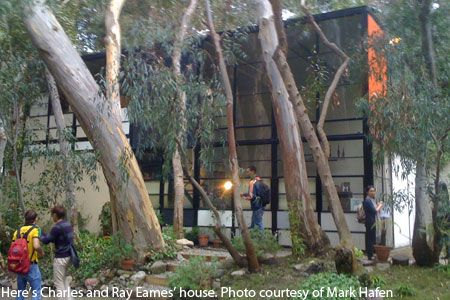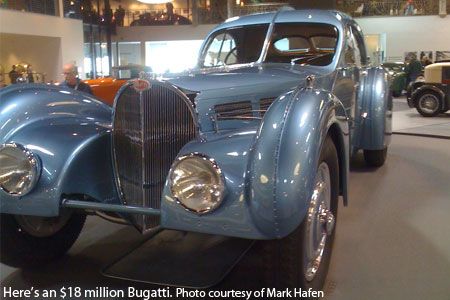Hanging with Hafen: Learn lessons from Los Angeles architecture
Often veterinary architects struggle to balance form and function. It took a trip to the West Coast for me to realize we should go back to our roots and focus on designing what works.

I love it when I end up learning a bunch of new information when I didn't have any intention of doing so.
A couple of weeks ago my wife and I made a mad dash out to the West Coast to see some water. This is something that a person who grew up on the East Coast and lives in (beautiful but landlocked) Colorado needs to do regularly. So we jetted out to Los Angeles and we fell into a number of special adventures. (I would call it serendipity if it didn't sound so cliché.)
Our first stop was to visit a wonderful house built by an Austrian architect named Schindler, who was a protégé of Frank Lloyd Wright. This was a spectacular little rambling, flat-roofed bungalow with sliding glass walls that opened to protected patios. The house looked like Frank Lloyd Wright meets Japanese tea house, and when it was built in 1928 amongst the rolling hills and palm trees of Los Angeles, it must have quite a sight. For one thing, Schindler designed “sleeping baskets” on the roof of the house, which actually accommodated two families. (They split a central kitchen but I wouldn't be surprised if they shared more than kitchenware.) This must have been a remarkable utopia for a guy born in Vienna, Austria.

Our next learning experience was a museum exhibit about Charles and Ray Eames. While you may not remember these two, you've undoubtedly sat in their chairs. Maybe you even own the famous Eames chair made of molded plywood and down-filled leather. If you were an architect in the 60s and 70s you had to have one. But it was the quotes that impressed me most, not the chairs.
“What works is better than what looks good. What looks good can change, but what works, works.” -Charles Eames
Every day we architects struggle with designing what works. Often we design what we think looks good. But in the post-World War II design boom, Charles and Ray Eames, were in the process of discovering a brave, exciting design world based on new technologies and ideas. It was an amazing time. We were racing to get to the moon and trying to discover who was "design wise."
Today we are much more cynical. We often don't have the luxury of getting excited about what we're designing, but in truth Charles and Ray were excited about designing chairs, not rocket ships. And their credo was simple: Design what works. It sounds simplistic, but how often do we run around the barn looking for the magic bullet when a simple solution is the answer? Isn't this what the Shakers did when they designed their beautiful chairs, houses, boxes, and barns at the turn of the century? This reminds me of another quote I liked.
“The extent to which you have a design style is the extent to which you have not solved the problem.” -Charles Eames
Architects have a tendency to drape design solutions in different styles, whether it's colonial, moderne, or Dwell Magazine. For Charles and Ray there was no style. “Form follows function” is a cliché that is only slightly less worn out than “less is more.” But amazingly enough, if you stop to ponder these clichés, they make sense. In the museum there was an orange juicer designed by the French avant-garde designer Phillipe Starck sitting beside a simple glass juicer from Target. The Starck juicer looked like a chrome-plated rocket ship, but if you were to use it, the juice would run all over your kitchen counter. How many more chrome juicers do we need in our life anyway?
Here's another quote that stuck with me.
“The preoccupation with self-expression is no more appropriate to the world of art than it is to the world of surgery. That does not mean I would reduce self-expression to zero. I'm sure that the really good surgeons operate on the edge of intuition. But the rigorous constraints in surgery, those are as important as any art.” -Charles Eames
I know this last quote wasn't expressly discovered just so I could pander to a bunch of veterinary surgeons, but boy does it work. Based on some of the work I've seen veterinary surgeons do, I firmly believe that plating a broken femur goes beyond a fractured, splintered bone, seven screws, and a stainless steel plate. It takes focus, sensitivity to the situation, and intuitive skill.
Last night I read about a guy who quit his day job to devote 10,000 hours to becoming the ultimate golf pro. He was inspired by Malcolm Gladwell's The Tipping Point (Little Brown, 2000), which says it takes 10,000 hours to become truly skilled at something. Frankly, I'm not sure I believe that. I could spend a couple dozen 10,000 hours studying to be a hedge fund manager, but I would never be any good at it. But after nearly 30 years in architecture, I think I am figuratively approaching the 10,000 hour mark. So with any luck, someday I will be truly great at it. But meanwhile I'm fortunate that I have an opportunity to apply my intuitive skills to projects every day.
I'm not building Taj Mahals, but veterinary facility design is an interesting business. When I was in architecture school we were taught to design beautiful buildings first-and then worry about the stuff that functions inside. These days I don't have that luxury. We design from the inside out: assembling rooms to minimize traffic and conflict, maximize capacities, accommodate technology, and so on. It may not be very sexy, but it's the type of stuff that makes or breaks your life as a veterinarian. The museum exhibit reminded me that function counts and so does intuition.

The next stop was a car museum. Ho-hum you may say, but this was a museum filled with spectacular streamlined art deco French cars from the 30s! They included Bugatti, Delahaye, Delage, and Talbot Lago. These cars represent the early stages of automotive design, and yet they also reflect the most divine marriage of leading-edge automotive technology, and even metallurgy, with a tradition of hand-crafted coach building that goes back to the 1700s. Mix in the new-fangled “aeroplane” technologies, (the first trans-Atlantic flight was Lindbergh's in 1928) and streamlined design, and you get the most exquisite icons of craftsmanship, technology, and design that have ever graced this world.
Kind of heady stuff, but the lesson here is as simple as the lessons learned from Charles and Ray: Take pride in what you have designed. Use your hands and head to transcend the ordinary. A car can be a car, but it can also be a work of art. A veterinary hospital can be a hospital-or it can make you smile when you walk in every morning.
The last learning experience was an evening eating raw oysters and crab cakes at the end of the 800-foot-long pier in the Santa Barbara harbor. It was a little dive bar, kind of hot and sweaty, but there were a couple dozen people in there swilling beer and munching seafood, including abalone. And this is where the story takes another turn.
In the 1930s a long-lost uncle of mine, John Emery Johns, who grew up in Colorado and went to the Colorado School of Mines to be a mining engineer, quit school. He had grown up on what were then the bone dry plains of Colorado, but he left to become an abalone fisherman in L.A. And here I sat, a hundred yards away from the abalone fishing fleet moored in the harbor. I actually never met the guy, but a year before he died he wrote to me. I was 15. And after he passed I inherited his engineering dividers, scale, and the mechanical pencils I still use.
The lesson learned at the end of the pier in Santa Barbara was twofold. Good beer, new friends, and good food are good for you! And if you don't want to be an engineer, you don't have to be one. We all choose every day what we want to be. I chose to be an architect. Hopefully, you choose to stay a veterinarian. Some days are going to be good, some not so good, but every day you have the responsibility of taking pride in whatever you do.